As a parent, I’m always seeking ways to foster my son’s growth and enthusiasm for learning.
One day, amidst the quest to make education engaging, I stumbled upon a remarkable realization – my son’s eyes lit up with curiosity when science was a joyful adventure, not a mundane lecture.
This sparked my journey to uncover the perfect nature science experiments for preschoolers.
Join me as we embark on hands-on activities that ignite curiosity and make learning an exhilarating journey of discovery!
Why I Love Nature Science Experiments For Preschoolers
Nurturing a child’s curiosity through nature science experiments is a priceless gift. By encouraging outdoor exploration, parents ignite a sense of wonder that fuels lifelong learning.
Nature’s classroom provides endless opportunities for sensory engagement, critical thinking, and understanding of the world’s interconnectedness. These are some of my favorite nature-themed preschool science experiments to help our little ones learn about the world around them.
Through hands-on activities, parents can foster a love for learning that extends beyond textbooks, making science an exciting journey of exploration and discovery for their little ones.
How I Chose These Nature Science Experiments For Preschoolers
Curating my beloved nature science experiments for preschoolers was no walk in the park, and it was an adventure in itself!
I scoured the best activity hubs, handpicking those that stood out. Each gem had to check boxes – lasting 20 minutes or more, brimming with excitement, and keeping those little feet on the move. But I didn’t stop there!
Every chosen experiment had to pass the ultimate test: my son’s giggles and smiles.
So, rest assured, each activity is not just a lesson but a guaranteed journey of joy and learning that’s been thoroughly kid-tested and mom-approved!
15 Of My Favorite Nature Science Experiments For Preschoolers
Embark on a journey of wonder with my top 15 nature science experiments for preschoolers. Spark curiosity and delight in your little ones through hands-on outdoor exploration and discovery!
1. Fly A Kite

Elevate your child’s outdoor exploration with the simple joy of kite flying.
Craft your own kite using easy-to-find materials, fostering creativity and outdoor fun while uncovering the science of wind and flight.
This easy pre-K science activity blends imagination with the marvels of nature for an unforgettable learning experience.
- Materials Needed: Plastic bags or lightweight fabric, wooden dowels or sticks, string or twine, tape and scissors, markers, stickers, or paints for decoration
- Activity Time: Approximately 30 minutes to an hour, depending on crafting and flying time.
- Ideal Age: Perfect for curious minds aged 4 to 8, encouraging hands-on exploration and scientific wonder.
- Science Discipline: Physics – Aerodynamics and Wind Dynamics
- Science Skills Focus: Observe wind patterns, experiment with kite designs, understand how air pressure affects flight, and predict kite behavior in varying wind conditions.
2. Build A Bird’s Nest
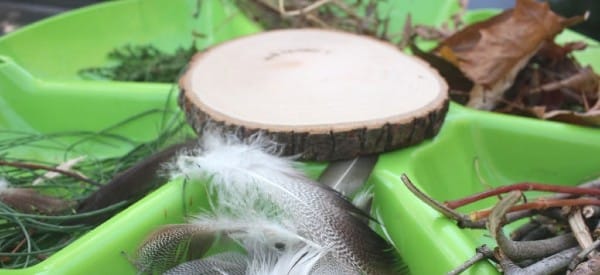
Engage your preschoolers in this hands-on STEM endeavor that sparks creativity and understanding of nature’s architecture.
Inspired by the avian builders, this activity blends imagination and science as your child constructs their own nest masterpiece. I love using this activity as fall preschool science experiment for my son because you can find lots of leaves and sticks!
As they gather materials, engineer a snug nest, and explore the science behind bird habitats, your little ones will deepen their connection to the natural world while having a feathered-fun time!
- Materials Needed: Twigs, leaves, grass, string, fabric scraps, playdough or clay, outdoor space for collecting materials
- Activity Time: Approximately 30-45 minutes, adaptable based on child’s engagement.
- Ideal Age: Perfect for inquisitive minds aged 3 to 6, fostering early science curiosity and creativity.
- Science Discipline: Life Sciences – Zoology and Ecology
- Science Skills Focus: Develop fine motor skills, explore animal behaviors, understand the concept of habitats, practice observation, and engage in hands-on experimentation.
3. ReGrow Science Kit for Kids
This engaging kit encourages hands-on learning as little ones nurture their very own mini garden, fostering a deeper connection with nature.
Watch in awe as seeds sprout into thriving plants, teaching valuable life lessons along the way. This kit is a window into the world of botany and ecology, providing an interactive way for children to grasp the magic of plant life.
- Materials Included: All-inclusive kit with seeds, pots, soil pellets, and step-by-step guide – no extra materials required.
- Activity Time: Approximately 2-3 weeks from planting to flourishing growth, fostering patience and anticipation.
- Ideal Age of Children: Perfect for curious minds aged 5 to 10, promoting hands-on learning and appreciation for nature.
- Science Discipline: Life Sciences – Botany and Ecology
- Science Skills Focus: Enhance observation skills, learn about plant life cycles, understand the role of sunlight and water in growth, and cultivate responsibility through nurturing living organisms.
4. Explore A Square Foot Of Ground
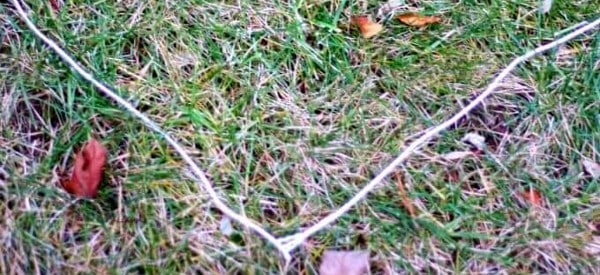
Encourage your little explorers to delve deep into nature’s wonders with the “Explore A Square Foot Of Ground” activity.
This simple science experiment for preschoolers is rooted in hands-on discovery. Children can investigate the miniature ecosystems beneath their feet, unveiling a world of insects, plants, and micro-habitats.
By creating a boundary, they’ll focus their observation, cultivating an appreciation for the intricacies of life in just one square foot.
Perfect for budding scientists or curious minds, this activity intertwines play with learning, fostering a lifelong love for the environment.
- Main Materials: String, stakes or sticks, magnifying glass, and observation notebook.
- Duration: Approximately 1 hour.
- Ideal Age: Children aged 4-8.
- Science Discipline: Ecology & Environmental Science.
- Science Skills Focus: Fosters observational skills and classification and encourages an understanding of biodiversity and micro-ecosystems.
5. Create A Small Compost Pile
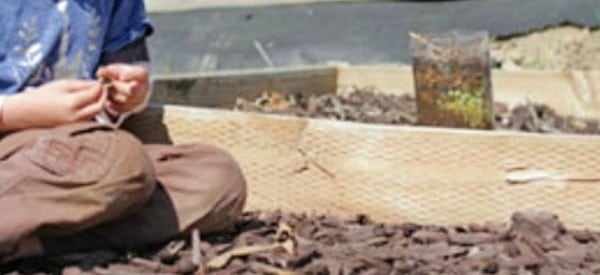
Nurture your child’s eco-consciousness with this simple soda bottle compost project. Let young minds delve into the wonders of decomposition and recycling by observing and understanding the circle of life. Using everyday kitchen waste, they’ll witness firsthand nature’s incredible recycling system. This engaging activity promotes environmental awareness and paves the way for budding scientists to feed their curiosity about the natural world.
- Materials Needed: Empty soda bottle, kitchen waste (fruit peels, vegetable scraps), soil, leaves, and shredded newspaper.
- Time Required: 3-4 weeks for observation, 10 minutes to set up.
- Ideal Age: 4-10 years.
- Science Discipline: Environmental Science.
- Science Skills Focus: Encourages hands-on exploration of decomposition processes, emphasizing observation and hypothesis-making regarding organic recycling.
6. See The Greenhouse Effect
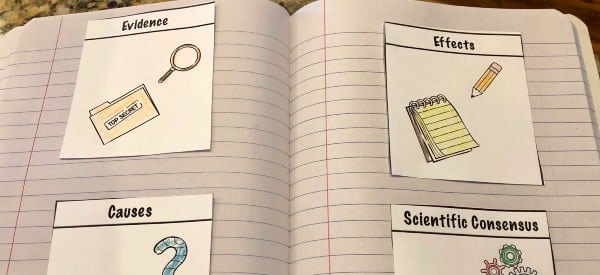
Unravel the mysteries of our planet’s climate with the “See The Greenhouse Effect” activity! Perfect for young explorers, this hands-on experiment beautifully demonstrates how the greenhouse effect impacts our world.
With easy-to-source materials and clear steps, preschoolers will delight in watching the science behind global warming come alive. This activity seamlessly blends knowledge with fun, encouraging a deep-rooted understanding of our Earth’s delicate atmosphere.
- Materials Needed: Two clear plastic bottles, thermometers, a lamp, and plastic wrap.
- Duration: Approximately 45 minutes.
- Ideal Age: 4-11 years.
- Science Discipline: Earth and Environmental Science.
- Science Skills Focus: Enhances observational skills, hypothesis formation, and understanding of climate change fundamentals.
7. Learning Resources Primary Science Lab
Inspire your young scientist with the Learning Resources Primary Science Lab activity set. This colorful, hands-on kit invites kids to explore, experiment, and discover, blending fun with foundational science concepts.
Crafted for little hands with big curiosities, it’s the perfect companion for budding scientists eager to delve into the wonders of the world.
- Materials Needed: Comprehensive set including test tubes, tweezers, goggles, and a magnifying glass.
- Duration: Approximately 30-45 minutes per experiment.
- Ideal Age: Best suited for children aged 4 to 8 years old.
- Science Discipline: Focus on basic physical and life sciences.
- Science Skills Focus: Enhances observational skills, promotes hypothesis-making, and introduces basic experimental procedures in a child-friendly manner.
8. Build A Solar Oven
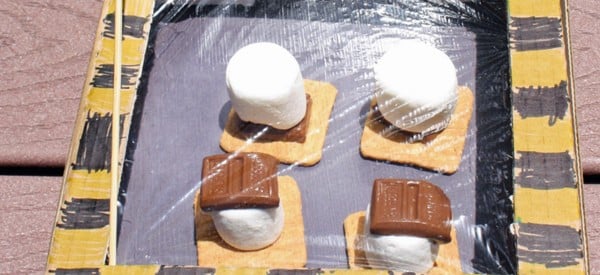
Delight your little scientists with a hands-on adventure in energy and heat! Using the power of the sun, children can craft a simple yet effective solar oven.
An engaging blend of learning and fun, this solar oven experiment encourages inquisitive minds to explore, predict, and observe while relishing a delicious outcome.
Let your child experience the sun’s potential, teaching them valuable science concepts in a yummy, tangible manner.
- Materials Needed: Shoebox, aluminum foil, plastic wrap, tape, black construction paper, and s’mores ingredients.
- Duration: Approximately 2 hours (including s’mores baking time).
- Ideal Age: 4-10 years old.
- Science Discipline: Physics and environmental science (focusing on solar energy).
- Science Skills Focus: This activity fosters observational skills, hypothesis formation, experimentation, and understanding heat energy transformations and renewable resources.
9. Construct A LEGO Waterwheel Course
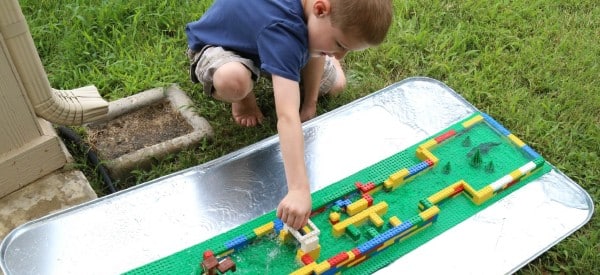
Channeling the spirit of young engineers, the Build A LEGO Waterwheel Course is a playful journey into the realms of science.
Drawing inspiration from LEGO’s timeless charm and water’s fascinating dynamics, kids will delve into hands-on learning, exploring the intricacies of motion, energy, and design.
This delightful preschool science experiment with water blends the marvels of play with foundational scientific principles, igniting youthful curiosity in the most delightful way.
- Materials Needed: LEGO bricks, a basin of water, a plastic bottle, and a wooden skewer.
- Duration: Approximately 60 minutes.
- Ideal Age: Children aged 6 to 10 years.
- Science Discipline: Engineering and Physics.
- Science Skills Focus: Fosters understanding of kinetic energy, fluid dynamics, and mechanical design through tactile learning and experimentation.
10. Rocket Blast Off Challenge
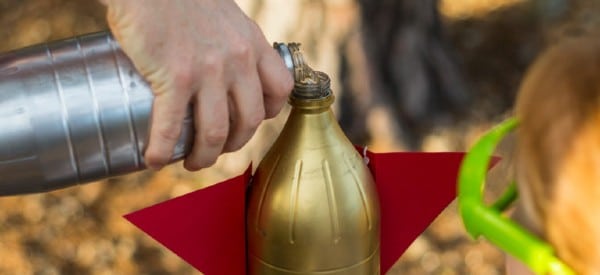
Ignite your child’s scientific curiosity with the Rocket Blast Off Challenge! Using simple household items, youngsters will craft their very own bottle rockets and witness the exhilarating sight of them soaring into the sky.
A delightful blend of hands-on crafting and science exploration, this activity promises laughter, learning, and awe-inspiring moments.
Perfect for those sunny afternoons, let the countdown to knowledge and fun begin!
- Materials Needed: Empty plastic bottle, vinegar, baking soda, and a cork.
- Duration: About 30 minutes.
- Ideal Age: 4-10 years old, with adult supervision.
- Science Discipline: Physics and Chemistry.
- Science Skills Focus: Teaches kids about action-reaction principles and gas expansion, fostering observational and experimental skills.
11. Thames & Kosmos Ooze Labs Chemistry Station
Let your little scientists dive into the intriguing world of chemistry with Thames & Kosmos Ooze Labs Chemistry Station.
With this hands-on, engaging set, children are encouraged to explore, experiment, and discover the wonders of science at their fingertips.
This delightful kit transforms everyday chemistry into fun-filled experiments, making learning an unforgettable adventure. Ideal for parents and educators striving for an enriching and interactive learning experience.
- Materials Included: Comprehensive lab set with tubes, measuring spoons, and color-changing agents.
- Duration: 45 minutes to 1 hour per experiment.
- Ideal Age: Suitable for children ages 6 and up.
- Science Discipline: Chemistry.
- Science Skills Focus: Enhances critical thinking, promotes hands-on experimentation, and encourages a deeper understanding of chemical reactions and properties.
12. Make Sun Prints
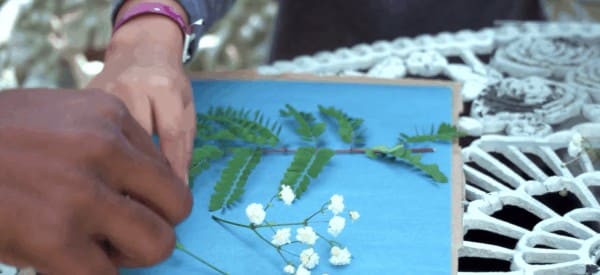
Unleash your little one’s inner scientist with the magical world of sun prints!
I love to work on this during a warm day in winter, as the seasons begin to change and this winter science project for preschoolers really comes to live with a young learner!
This simple yet mesmerizing activity transforms the sun’s power into ethereal patterns on paper, bridging the gap between art and science.
Children can observe the captivating play of light and shadow in this craft. It’s not only an exciting artistic endeavor but also a vivid introduction to the wonders of solar energy and photochemical reactions.
- Materials Needed: Sunprint paper or construction paper, flat objects (like leaves or toys), and sunlight.
- Duration: Approximately 2-4 hours, including sun exposure.
- Ideal Age: Best suited for children ages 4-8.
- Science Discipline: Chemistry and Physics.
- Science Skills Focus: This activity emphasizes the understanding of photochemical reactions and the absorption and reflection of light, nurturing observational and analytical skills.
13. Make An Anemometer
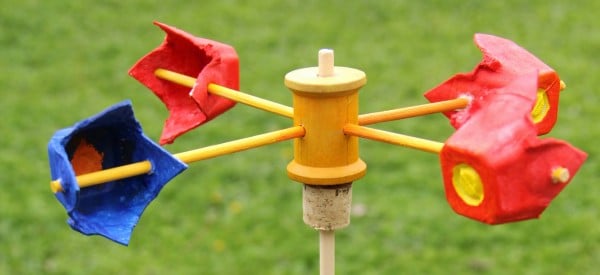
Discover the wonders of wind speed through a fun and hands-on DIY activity! Using everyday materials, the “Make An Anemometer” activity from Piikea Street encourages young scientists to explore the mechanics and principles of wind measurement.
Crafted with care, this project promotes a mix of creativity, scientific inquiry, and tactile learning.
Perfect for curious minds, this activity will have children eager to step outside and witness the invisible force of wind in action.
- Materials Needed: Paper cups, straws, push pin, pencil with eraser, and a protractor.
- Duration: Approximately 30 minutes.
- Ideal Age: 4-10 years.
- Science Discipline: Meteorology and Physics.
- Science Skills Focus: This activity fosters observational skills, understanding of mechanical movements, and introduction to meteorological tools.
14. Blow Giant Bubbles
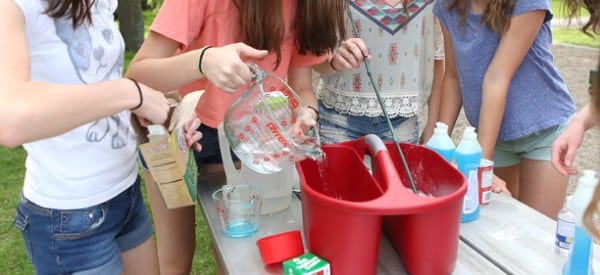
Unveil the magical world of gigantic bubbles with a simple and delightful activity. Perfect for sunlit afternoons, children can immerse in the joy of creating enchanting, glistening spheres, using just a few household items.
So, gather around, let little hands get busy, and let their eyes sparkle with wonder as they behold the beauty of giant bubbles dancing in the air.
- Materials Needed: Dish soap, water, glycerin, and string or straws.
- Duration: About 15-30 minutes.
- Ideal Age: 4-10 years.
- Science Discipline: Physics and Chemistry.
- Science Skills Focus: Enhances observation, prediction, and understanding of bubble formation, surface tension, and light refraction.
15. Ping-Pong Ball Catapult
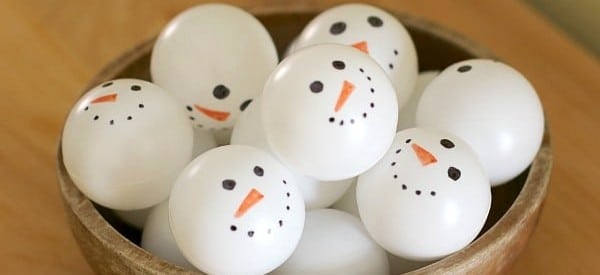
Unleash your little scientist’s creativity and critical thinking with the Ping-Pong Ball Catapult activity!
Perfect for indoor fun, it’s a delightful blend of craftsmanship and discovery, ensuring giggles and knowledge go hand in hand.
- Materials Needed: Craft sticks, rubber bands, ping-pong balls
- Duration: Approximately 30-45 minutes.
- Ideal Age: Best for children aged 5-10 years.
- Science Discipline: Physics, specifically focusing on force and motion.
- Science Skills Focus: This activity enhances problem-solving, prediction-making, and the understanding of cause-and-effect relationships within physical motion.
Conclusion
In embracing the wonders of the natural world, we gift our preschoolers with endless avenues of discovery.
These nature science experiments not only nourish their innate curiosity but also lay the foundation for a lifelong love of learning with fun STEAM science experiments for kids.
As we guide their little hands through exploration, we’re nurturing budding scientists and environmentally-aware citizens.
So, venture outside, revel in nature’s classroom, and watch as your child marvels at the magic of the world around them.


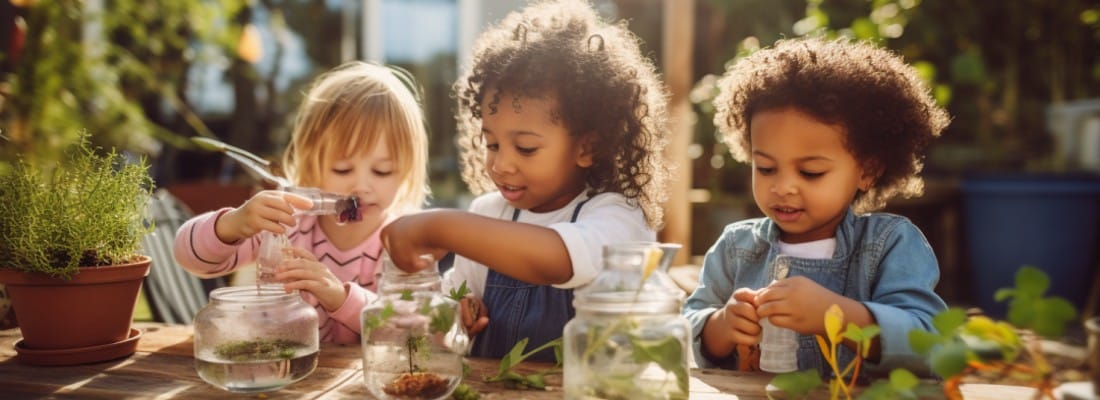







0 Comments